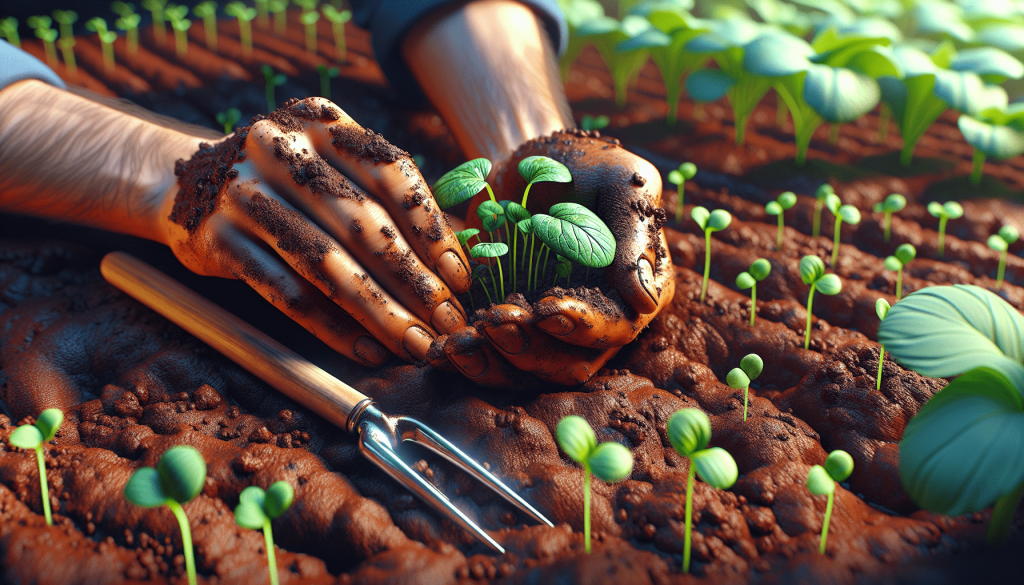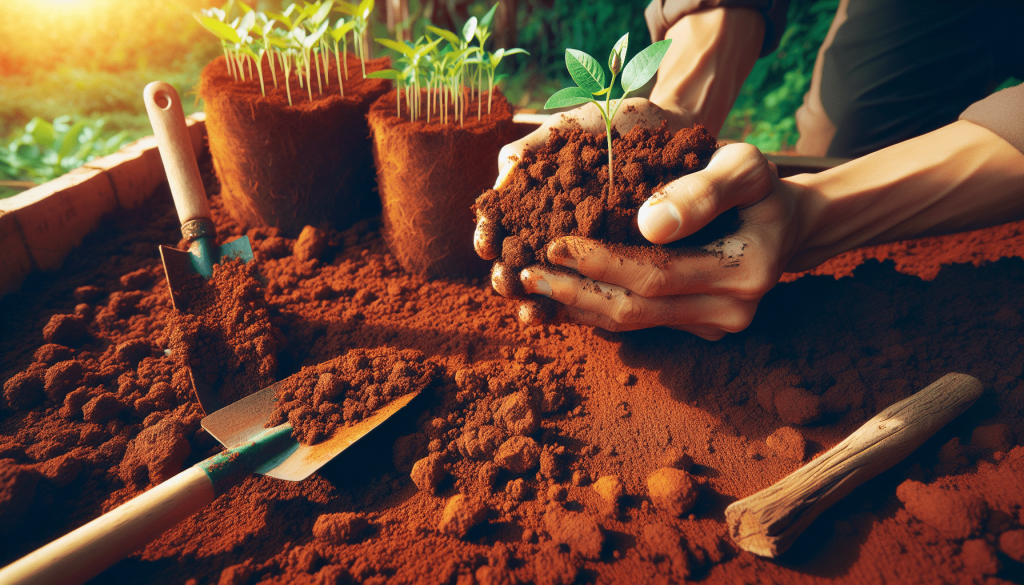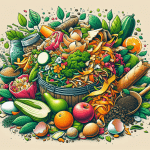This post may contain affiliate links. As an Amazon Associate, we may earn commissions from qualifying purchases.
Have you ever found yourself discouraged by the dense, heavy nature of clay soil when gardening? Worry not; you are not alone! Many gardeners face the challenges that come with clay soil, yet, with the right techniques, it is entirely possible to transform this stubborn soil into rich, productive ground for growing a variety of vegetables.
Understanding Clay Soil
Before diving into the techniques to grow vegetables in clay soil, it’s crucial to understand what makes clay soil unique. Clay soil is composed of fine particles that are closely packed together, making it dense and often waterlogged. These characteristics can cause drainage issues and make it hard for plant roots to penetrate. However, clay soil also has its merits. It is rich in nutrients and has excellent water retention when managed correctly.
Assessing Your Soil
The first step to successful vegetable gardening in clay soil is to assess its condition. To get a better sense of your soil, conduct a simple soil test. You can either get a soil test kit from your local garden center or send a sample to a soil testing laboratory. This will help you understand its nutrient content, pH level, and structure.
Simple Soil Test Methods:
- Jar Test: Fill a jar with soil and water, shake it up, then let it settle. Observe the layers that form over 24 hours. Sandy particles will settle first, followed by silt, and clay particles on top.
- Ribbon Test: Dampen a handful of soil and squeeze it into a ribbon. The longer it holds together without breaking, the higher the clay content.
Improving Clay Soil
Once you’ve assessed your soil, the next step is improving its structure to make it more conducive for vegetable growth. Below are effective techniques to enhance the quality of your clay soil.
Amending with Organic Matter
Organic matter is a game-changer for clay soil. It improves soil structure, enhances drainage, and provides essential nutrients. Some excellent sources of organic matter include compost, well-rotted manure, and leaf mold.
- Compost: Apply a 2- to 3-inch layer of compost and mix it into the top 6 to 8 inches of soil. This can vastly improve aeration and nutrient content.
- Manure: Well-rotted manure adds both nutrients and organic matter. Ensure it is fully decomposed to avoid burning plant roots.
- Leaf Mold: Made from decomposed leaves, this is another brilliant option to enhance soil texture and provide nutrients.
Mulching
Mulching serves multiple purposes. It retains moisture, suppresses weeds, and maintains soil temperature. Organic mulches like straw, grass clippings, and wood chips break down over time, adding more organic matter to your soil.
Cover Cropping
Cover crops, also known as green manure, are grown not to harvest but to improve soil health. Crops such as clover, rye, and alfalfa work well. They add organic matter, fix nitrogen in the soil, and prevent erosion.
Double Digging
Double digging is a traditional technique that involves loosening the soil to a depth of about two feet. This improves aeration and drainage, making it easier for plant roots to grow.
- Remove the topsoil of a 12-inch wide trench.
- Loosen the subsoil layer with a fork.
- Mix organic matter into the bottom soil.
- Replace the topsoil and mix again.
Adding Gypsum
Gypsum (calcium sulfate) can help break up compacted clay soil, improving both structure and drainage. It’s especially useful in soils high in sodium. Apply according to package instructions and incorporate it into the soil.
Creating Raised Beds
Raised beds are an effective way to grow vegetables in clay soil. They provide better drainage and make soil improvement more manageable.
- Materials: Use untreated wood, stone, or recycled materials to build your bed.
- Height: Aim for a depth of 12 to 18 inches to allow sufficient room for root systems.
- Soil Mix: Fill with a mix of topsoil, compost, and other organic matter.
Seasonal Tillage
While consistent, deep tilling can damage soil structure, seasonal tillage helps break up compacted layers in clay soil. Tilling in the fall and adding organic matter allows winter weather to further break down compacted soil, making it more workable in spring.

Choosing the Right Vegetables
Not all vegetables are suited to clay soil, but many can thrive with the right preparation. Here’s a table of vegetables that typically do well in clay soil, along with some planting tips:
| Vegetable | Planting Tips |
|---|---|
| Carrots | Choose short, round varieties; mix sand into the soil. |
| Beans | Bush beans perform better than pole beans in clay soil. |
| Broccoli | Thrives in nutrient-rich soil; ensure good drainage. |
| Cabbage | Benefits from the high mineral content in clay soil. |
| Potatoes | Plant in mounds or raised beds to avoid waterlogging. |
| Squash | Both summer and winter varieties adapt well; ensure proper spacing. |
| Kale | Hardy greens that enjoy the cool, moist conditions provided by clay soil. |
Planting Techniques
Once you’ve chosen your vegetables, it’s vital to use planting techniques that optimize growth in clay soil.
- Seed Trays and Transplants: Start seeds in trays and transplant them when they are strong enough. This gives them a head start and bypasses the initial challenges of clay soil.
- Row Mounding: Create mounds or ridges in your planting rows to improve drainage and prevent root rot.
- Spacing: Provide extra space between plants to ensure ample air circulation and reduce competition for nutrients.
Watering Practices
Clay soil has unique watering needs due to its dense nature. Proper watering techniques can prevent issues such as root rot and nutrient leaching.
Frequency and Quantity
Water deeply but less frequently to encourage deep root growth. Overwatering can lead to waterlogged soil and root diseases.
Timing
Water in the morning to allow the soil to absorb moisture before the heat of the day. This also reduces the risk of fungal diseases.

Managing Weeds and Pests
Weeds and pests can be particularly problematic in clay soil. Integrated Pest Management (IPM) practices can help keep your vegetable garden healthy.
Mulching for Weed Control
As mentioned earlier, mulching not only improves soil but also suppresses weeds by blocking sunlight. Organic mulches work best, breaking down into the soil over time.
Beneficial Insects and Natural Predators
Encourage beneficial insects like ladybugs, lacewings, and predatory beetles to keep pest populations in check. Planting flowers such as marigolds and nasturtiums can attract these helpful bugs.
Organic Pest Sprays
Homemade or commercial organic sprays can effectively manage pest infestations. Neem oil, insecticidal soap, and garlic spray are popular choices.
Seasonal Care and Crop Rotation
Seasonal care practices and crop rotation are vital in maintaining soil health and vegetable productivity in clay soil.
Winter Preparation
Prepare your garden for winter by adding compost or organic matter to your soil. Covering your beds with mulch or a cover crop can protect your soil from erosion and compaction during the cold months.
Crop Rotation
Rotating your crops each season prevents nutrient depletion and disrupts pest and disease cycles. Follow a crop rotation plan based on plant families and nutrient needs.
| Year | Bed 1 | Bed 2 | Bed 3 | Bed 4 |
|---|---|---|---|---|
| 1 | Tomatoes | Beans | Cabbage | Root Vegetables |
| 2 | Beans | Root Vegetables | Tomatoes | Leafy Greens |
| 3 | Root Vegetables | Leafy Greens | Beans | Cabbage |
| 4 | Leafy Greens | Cabbage | Root Vegetables | Tomatoes |
Troubleshooting Common Problems
Even with the best preparation, you may encounter issues while growing vegetables in clay soil. Here’s how to address some common problems:
Poor Germination
Seeds may struggle to germinate in heavy clay soil. To improve germination rates, use seed trays, and ensure the soil is consistently moist but not waterlogged.
Compacted Soil
Regularly check for signs of soil compaction, such as stunted growth and hard, impenetrable soil. Aerate your soil by adding more organic matter and practicing double digging.
Yellowing Leaves
Yellowing leaves often indicate poor drainage or nutrient deficiencies. Ensure proper drainage and consider performing a soil test to adjust nutrient levels accordingly.
Conclusion
Growing vegetables in clay soil may present a unique set of challenges, but with dedication and the right techniques, it’s entirely possible to achieve a bountiful harvest. By improving soil structure, choosing the right plants, practicing effective watering and pest management, and staying vigilant with seasonal care, you’ll transform your clay soil garden into a thriving vegetable paradise.
Happy gardening!








